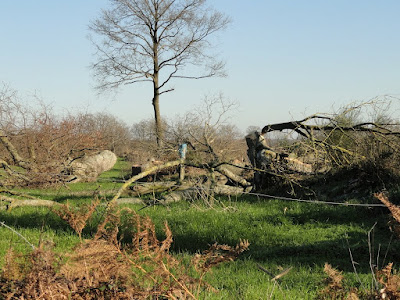 |
| Taken out of the kitchen window |
 |
| Taken out of the living room window |
Tomorrow is another day however and I've looked at several weather forecasts for the next week. So tomorrow my grown up will be back and thinking:
1. We don't have a 4-wheel drive car
2. We have a steep slope up to our garage
3. To get to the village 2kms away we have to go up hill and down dale
4. There are no snowploughs in rural Brittany. In fact there probably aren't any in Brittany at all and only major roads get gritted.
5. The forecast is predicting minus 11C in a few days time!
But just for today I shall enjoy! :-)




















































